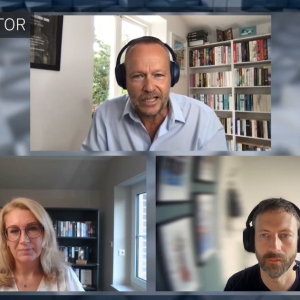Application development tools company Unify Inc, is pegging its future success on the latest release of the flagship Vision product – the San-Jose-based company’s first major new product launch since Vision 3 was shipped in October 1996. That version was the first to incorporate the Vision/Web technology which generates Java applets for deployment over the web. The latest incarnation of Vision boasts the Vision Application Server, which the company is calling the industry’s first application integration server. The VAS was designed to help large companies improve customer service by giving customers a single point of contact from any client platform, including web browsers. Its function is to centrally coordinate and manage back-end business components or services to deliver applications that integrate existing systems and information sources. Unify says the VAR is compatible with all major middleware standards, database and application protocols and systems management and security packages. It allows for the integration with back-end legacy data and packaged applications through built-in support for IBM Corp’s MQSeries technology. Along with the VAS, goes the new Vision Application Builder toolset, which extends the component development model with pre-built classes for constructing server- or client-based business components. Both the Vision Application Server and Vision Application Builder are available now, with the VAS going for $500 per concurrent user and the VAB priced at $7,300 per developer. Unify chief executive officer Reza Mikailli says the new products give Unify the edge over competitors Net Dynamics Inc and the Kiva Software unit at Netscape Communications Corp, who approach development from the front end and have problems adapting applications and middleware. In February, Unify posted its first profitable quarter in the last six, with third-quarter net income of $76,000, or $0.01 per share, against a loss of $8.0m in the year-ago quarter. Revenue increased to $6.5m, up from $5.3m the preceding year. Revenue from Vision license fees was $2.0m. Mikailli says that revenue growth going forward should stay in the 25% to 35% range, with Vision’s growth at about 70% to 80%. Given the company’s typical run rate of about $6.5m per quarter, Mikailli projects that Unify will turn a profit, not only for the recently-completed fourth quarter, but for every quarter of the next fiscal year. His guidance to analysts will be that earnings for next year should amount to $0.15 per share, when analysts surveyed by First Call are only looking for about a penny per quarter. That $0.15 may itself be a little low, as the company seems well aware that simply meeting expectations isn’t enough to please Wall Street. Hesitation by potential customers due to year 2000 concerns is a major factor preventing a more sharp upturn in the bottom line, according to Mikailli. The stock price, which has been floundering around $2.20 lately and hasn’t seen $5 in over a year, isn’t much of a concern for the company, which feels that after a string of profitable quarters and the adoption of a more aggressive posture with clients and analysts, it can get back to the $12 level, where the stock was initially offered nearly two years ago. The recent disappearance of Visix Software Inc (CI No 3,380) – which did the work on the graphical front-end for Vision 3 – shouldn’t be a problem, as Unify both bought the source code and has moved to an all-Java approach anyway. In addition to the new products, the company also plans to announce a major distribution partnership with IT services company James Martin & Co within the next ten days.






